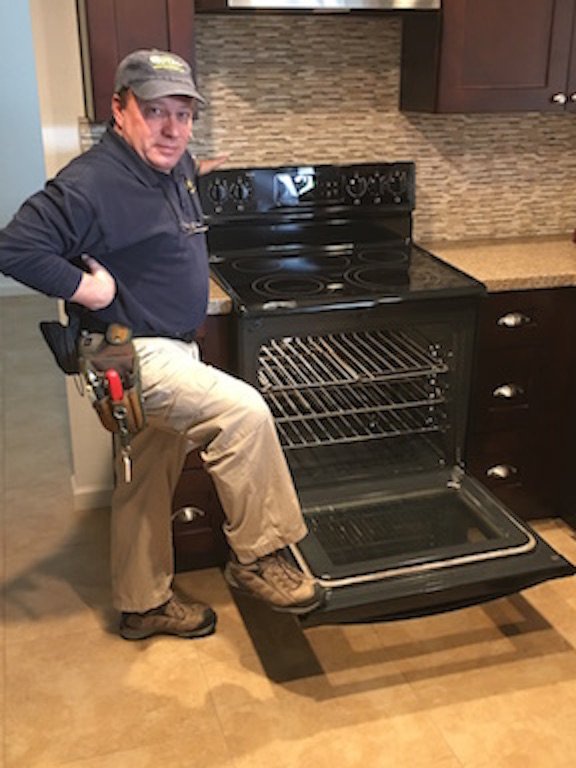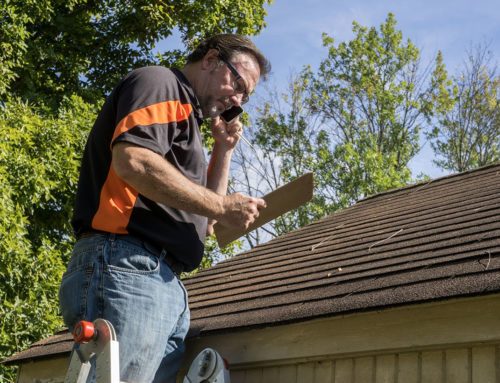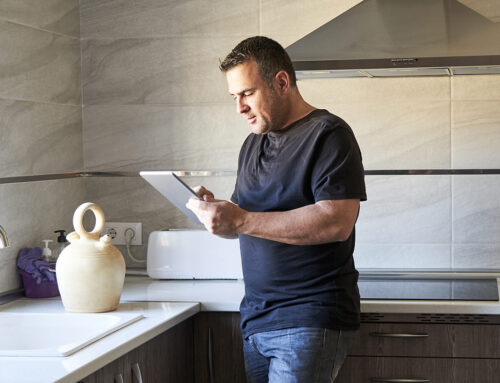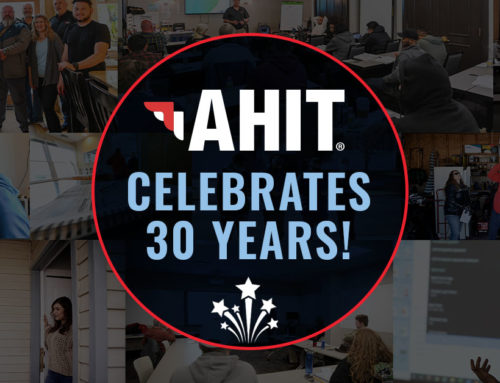
A day in the life of a home inspector: Bruce LaBell
Bruce LaBell graduated from AHIT’s home inspector training course in 2003. He spent a year learning about the business and working for another firm before starting his company, Royal Home Inspectors, in Maricopa County, Ariz. Today, his thriving home inspection career includes owning and running not only Royal Home Inspectors LLC, but also Got Mold LLC, a company that offers clients mold assessments, allergen screens and volatile organic compound screens.. We asked LaBell to tell us about a typical day in the life of a successful home inspector. You’ll find he has a diverse and interesting mix of actual inspections, marketing, giving back to the profession and freedom to be with family.
“I usually get up between 5:30 and 6 in the morning to get the kids up and ready for school. We leave the house about 7 a.m. to get them off to school. And with my mobile office sitting in my pocket (including my cell phone), I usually arrive at my first inspection between 8:30 and 9 a.m.,” he said.
LaBell averages from one to three inspections daily, depending on square footage. His goal is to inspect up to 10,000 square feet each workday.
“My average house size is about 3,000 to 5,000 square feet, and it takes from four to six hours a house. I service a radius of about 60 miles — all of Maricopa County, which has about 30 different cities. My average house age is from 10 to 15 years old,” he said.
Before he arrives at a house, he’ll take note of the surrounding neighborhood. LaBell likes to get a sense of a community’s homes, how they’re built, what types of roofs they have and whether the neighborhood is well-maintained or run down.
He’ll prepare mentally for the inspection with information he gathers beforehand, including whether he’ll meet the client or real estate agent at the property, and how he’ll gain access to the site.
“When we get onsite, we walk around the house just to see what’s going on. Once we get into the house, if I’m meeting the sellers, I’ll walk in without a tool belt, introduce myself and let them know I’ll be onsite for whatever amount of time,” he said. “I want them to feel comfortable that I’m not barging into the house. I take my sunglasses off. I make the impression that I am a human being, not just there to get a job done.”
After the introduction, he’ll go back to the car for this tools, ladder and computer, setting up his mobile office in the seller’s kitchen.
But if no one is at the house, he does a quick inspection before setting up just to make sure there are no animals or other issues that might prevent a successful inspection.
“I simply get a lay of the land and what’s happening in the house before I set up,” LaBell said. “Once I’m set up in the house, I go back out and start on the outside, working my way in.”
LaBell inspects the roof, pool (there are many of those in Arizona) and everything else outside before starting on the inside. His systematic approach, he told us, is to prevent tracking dirt and debris from outside to the home’s living space.
“We want to keep the house as pristine as possible and not disturb anything,” he said.
LaBell prefers to work on a software program on his computer. Because of Arizona’s bright sunlight, he often can’t see the tablet screen outside, so he takes notes and goes back to the kitchen to input them. Having the kitchen as his central location also makes it easy for homeowners, buyers, Realtors and others to ask him questions, if needed.
After completing the inside of the home, he’ll discuss his findings with the client or agent or email the report, if that is what the client requests.
“I review the findings and tell clients that this is the information they’re going to need to make an informed decision,” LaBell said.
He packs up and leaves the property, then uses the time in any given community for marketing efforts. He takes and returns calls from colleagues, real estate agents or home sellers and buyers with questions related to home inspections. Helping people is free, but the benefits of being the “go-to” industry expert go far.
“I’m the smart friend,” he said. “I want people to call me and ask questions about home inspections. It’s good for business.”
He takes the downtime between inspections to set up new appointments and visit real estate brokerages along the way.
“I’ll go in the office to deliver a brochure and try to set up a lunch-and-learn or a presentation about my services,” he said. “Before I go to another inspection, I might go to a real estate networking meeting to meet other professionals and say: This is what I do. How can I be of service? As much as I’d like to advertise to the end user, the people that actually put me in touch with the end users are the real estate professionals. So, I try to enhance my relationship with them as often and as much as possible.”
LaBell also uses time between and after appointments to look for weekend and other opportunities to be an instructor for AHIT and American Society of Home Inspectors. He teaches not only future home inspectors but also real estate agents taking continuing education courses. That’s another opportunity to market his service, while educating.
Depending on whether he’s in charge of picking up the kids from school that day, LaBell said he’ll get home between 5:30 p.m. and 7 p.m., which gives him time to have dinner with his family.
“I may have to go back in the evening and send out correspondence that I wasn’t able to send from the field, go to a webinar meeting or finalize a report,” he said. “I usually wrap up my day around 9 p.m.”
Bruce LaBell holds positions on several boards and sits on the national board of directors for ASHI. He is a member of the Arizona Enforcement Advisory Committee (BTR) that reviews other home inspectors’ reports. Among many other posts, LaBell is an instructor for AHIT and ASHI at major events.




